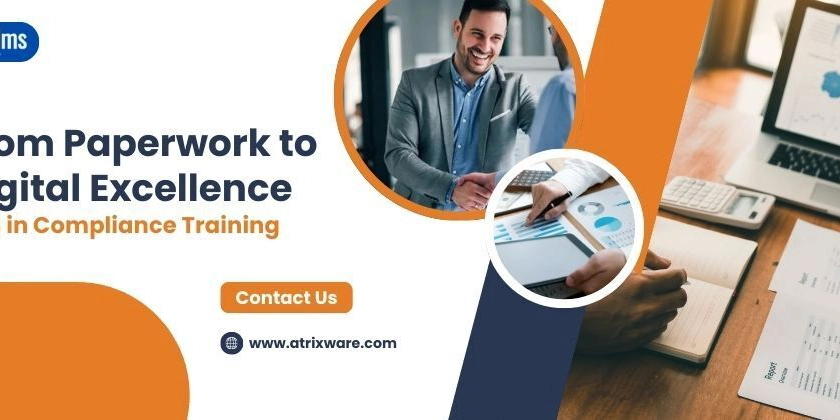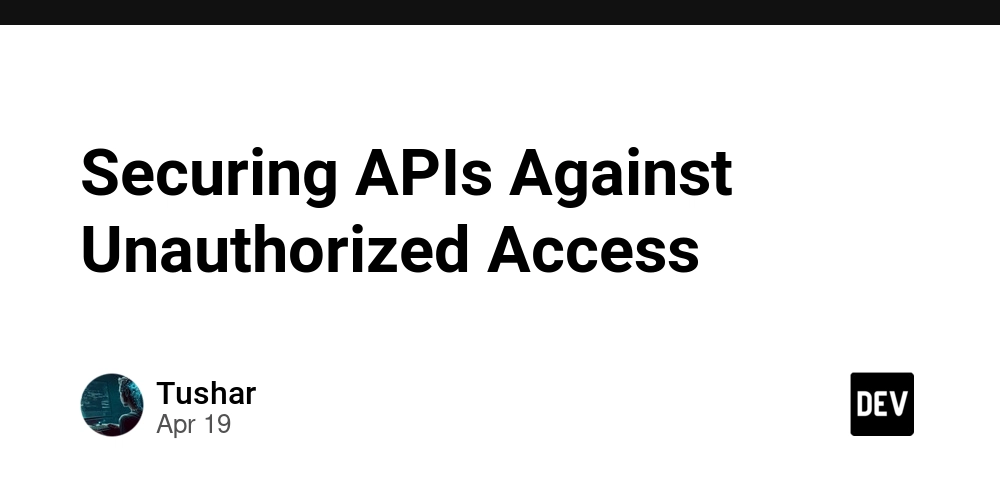From Paperwork to Digital Excellence: LMS in Compliance Training
In an era driven by digital transformation, companies are rapidly moving beyond outdated, manual compliance training methods. Paperwork-heavy processes are being replaced with Learning Management Systems (LMS), which offer a faster, more accurate, and more engaging way to deliver regulatory training. As compliance requirements grow increasingly complex, LMS for Compliance Training is emerging as the gold standard—ensuring not just adherence to regulations but also improving workforce efficiency and readiness. This article delves into how LMS technology is revolutionizing the compliance training landscape and why shifting toward a digital approach is no longer optional for forward-thinking organizations. From Paper Trails to Digital Pathways Traditional compliance programs were often time-consuming and resource-intensive. Printed manuals, face-to-face seminars, and handwritten assessments dominated the scene. Tracking completions, updating training materials, and maintaining audit-ready records was a logistical nightmare—especially for companies operating in multiple locations. Today’s compliance training has evolved dramatically. Digital platforms have redefined how information is delivered and retained. By centralizing training processes in an LMS, businesses gain the ability to scale content, customize learning for different roles, and maintain an accurate, up-to-date record of training activity. This transition from static formats to dynamic, interactive systems empowers organizations to be more agile, transparent, and audit-ready. Why LMS Is Revolutionizing Compliance Education A modern LMS is more than a learning portal—it’s a complete compliance training ecosystem. Here’s how these platforms are transforming the experience for both learners and administrators: 1. Automated Monitoring and Instant Reporting With built-in automation, LMS platforms eliminate the need for manual tracking. Progress is logged in real time, certifications are time-stamped, and administrators can access comprehensive compliance dashboards with a few clicks. Automated notifications alert teams when retraining is due or when policies change—ensuring no one falls through the cracks. 2. Flexible Learning Anytime, Anywhere One of the biggest advantages of LMS platforms is their ability to deliver content on-demand. Employees have the flexibility to complete training at their own speed, from any location, and on any device. Whether it's a smartphone on the go or a desktop in the office, learning is uninterrupted and convenient—greatly increasing participation and retention. 3. Targeted Training by Role or Region An LMS allows companies to assign specific courses based on job function, department, or geographic location. This ensures that employees receive relevant, role-specific training aligned with the laws and regulations they must follow. No more irrelevant or overly generic content—just focused, impactful learning. 4. Immersive, Interactive Experiences Gone are the days of dull PowerPoints and endless lectures. Today’s LMS platforms support multimedia, simulations, interactive quizzes, and gamified experiences that bring compliance scenarios to life. This makes training far more engaging and improves learners’ ability to apply knowledge in real-world situations. 5. Real-Time Regulatory Adaptation Keeping up with changing regulations is a challenge for any organization. LMS platforms make it easy to update training content in real time, notify employees of changes, and track who has completed updated modules. Some systems even include access to libraries of expert-curated, legally vetted content—saving you hours in content development. 6. Cost-Effective and Scalable for Growth Training hundreds—or thousands—of employees used to require significant investment. LMS platforms slash those costs by removing the need for venues, paper materials, travel, and instructors. For smaller businesses, implementing an LMS for small companies allows them to access high-quality compliance training without the high overhead, leveling the playing field with larger competitors. 7. Built-In Audit Support and Certification Management During regulatory inspections, having accurate and accessible training records can make all the difference. An LMS provides a secure, searchable repository of certifications, course versions, timestamps, and learner performance—ensuring that your organization is always prepared for audits and reviews. Industry Use Cases: LMS Across Regulated Sectors Industries with strict compliance requirements commonly rely on LMS platforms: Healthcare: Ensures proper training on HIPAA, patient safety, and infection prevention protocols. Banking & Finance: Supports anti-money laundering (AML), data security, and financial reporting compliance. Manufacturing: Delivers OSHA-related safety training, environmental sta

In an era driven by digital transformation, companies are rapidly moving beyond outdated, manual compliance training methods. Paperwork-heavy processes are being replaced with Learning Management Systems (LMS), which offer a faster, more accurate, and more engaging way to deliver regulatory training. As compliance requirements grow increasingly complex, LMS for Compliance Training is emerging as the gold standard—ensuring not just adherence to regulations but also improving workforce efficiency and readiness.
This article delves into how LMS technology is revolutionizing the compliance training landscape and why shifting toward a digital approach is no longer optional for forward-thinking organizations.
From Paper Trails to Digital Pathways
Traditional compliance programs were often time-consuming and resource-intensive. Printed manuals, face-to-face seminars, and handwritten assessments dominated the scene. Tracking completions, updating training materials, and maintaining audit-ready records was a logistical nightmare—especially for companies operating in multiple locations.
Today’s compliance training has evolved dramatically. Digital platforms have redefined how information is delivered and retained. By centralizing training processes in an LMS, businesses gain the ability to scale content, customize learning for different roles, and maintain an accurate, up-to-date record of training activity. This transition from static formats to dynamic, interactive systems empowers organizations to be more agile, transparent, and audit-ready.
Why LMS Is Revolutionizing Compliance Education
A modern LMS is more than a learning portal—it’s a complete compliance training ecosystem. Here’s how these platforms are transforming the experience for both learners and administrators:
1. Automated Monitoring and Instant Reporting
With built-in automation, LMS platforms eliminate the need for manual tracking. Progress is logged in real time, certifications are time-stamped, and administrators can access comprehensive compliance dashboards with a few clicks. Automated notifications alert teams when retraining is due or when policies change—ensuring no one falls through the cracks.
2. Flexible Learning Anytime, Anywhere
One of the biggest advantages of LMS platforms is their ability to deliver content on-demand. Employees have the flexibility to complete training at their own speed, from any location, and on any device. Whether it's a smartphone on the go or a desktop in the office, learning is uninterrupted and convenient—greatly increasing participation and retention.
3. Targeted Training by Role or Region
An LMS allows companies to assign specific courses based on job function, department, or geographic location. This ensures that employees receive relevant, role-specific training aligned with the laws and regulations they must follow. No more irrelevant or overly generic content—just focused, impactful learning.
4. Immersive, Interactive Experiences
Gone are the days of dull PowerPoints and endless lectures. Today’s LMS platforms support multimedia, simulations, interactive quizzes, and gamified experiences that bring compliance scenarios to life. This makes training far more engaging and improves learners’ ability to apply knowledge in real-world situations.
5. Real-Time Regulatory Adaptation
Keeping up with changing regulations is a challenge for any organization. LMS platforms make it easy to update training content in real time, notify employees of changes, and track who has completed updated modules. Some systems even include access to libraries of expert-curated, legally vetted content—saving you hours in content development.
6. Cost-Effective and Scalable for Growth
Training hundreds—or thousands—of employees used to require significant investment. LMS platforms slash those costs by removing the need for venues, paper materials, travel, and instructors. For smaller businesses, implementing an LMS for small companies allows them to access high-quality compliance training without the high overhead, leveling the playing field with larger competitors.
7. Built-In Audit Support and Certification Management
During regulatory inspections, having accurate and accessible training records can make all the difference. An LMS provides a secure, searchable repository of certifications, course versions, timestamps, and learner performance—ensuring that your organization is always prepared for audits and reviews.
Industry Use Cases: LMS Across Regulated Sectors
Industries with strict compliance requirements commonly rely on LMS platforms:
Healthcare: Ensures proper training on HIPAA, patient safety, and infection prevention protocols.
Banking & Finance: Supports anti-money laundering (AML), data security, and financial reporting compliance.
Manufacturing: Delivers OSHA-related safety training, environmental standards, and operational procedures.
Technology & Cybersecurity: Covers topics like GDPR, data privacy, and secure coding practices.
Each sector benefits from tailored content, role-specific paths, and built-in tracking that simplifies complex regulatory requirements.
Choosing the Right LMS for Compliance Needs
Selecting a suitable LMS starts with aligning features to your compliance goals. Look for:
Ease of Use: An intuitive interface encourages employee participation and reduces support needs.
Customization Capabilities: Your LMS should allow content to be adapted for different laws, policies, and roles.
Advanced Analytics: Detailed reports offer visibility into completion rates, learning outcomes, and areas of risk.
Seamless Integration: Ensure your LMS integrates with existing HR systems, document repositories, and communication tools.
Data Security: Given the sensitive nature of compliance data, your LMS must adhere to strict security standards.
Final Thoughts
Learning Management Systems have become indispensable tools for modern compliance training. They enhance efficiency, improve learner engagement, and ensure that training is timely, relevant, and properly documented. In a world where regulations are constantly changing, relying on manual systems simply isn't sustainable.
Whether you're managing global compliance across multiple teams or exploring an LMS for small companies, adopting a digital approach will help future-proof your training program. By investing in the right LMS, you’re not just meeting regulatory requirements—you’re building a stronger, smarter, and more resilient workforce.





























![[Webinar] AI Is Already Inside Your SaaS Stack — Learn How to Prevent the Next Silent Breach](https://blogger.googleusercontent.com/img/b/R29vZ2xl/AVvXsEiOWn65wd33dg2uO99NrtKbpYLfcepwOLidQDMls0HXKlA91k6HURluRA4WXgJRAZldEe1VReMQZyyYt1PgnoAn5JPpILsWlXIzmrBSs_TBoyPwO7hZrWouBg2-O3mdeoeSGY-l9_bsZB7vbpKjTSvG93zNytjxgTaMPqo9iq9Z5pGa05CJOs9uXpwHFT4/s1600/ai-cyber.jpg?#)










































































































































![[The AI Show Episode 144]: ChatGPT’s New Memory, Shopify CEO’s Leaked “AI First” Memo, Google Cloud Next Releases, o3 and o4-mini Coming Soon & Llama 4’s Rocky Launch](https://www.marketingaiinstitute.com/hubfs/ep%20144%20cover.png)





























































































































![[FREE EBOOKS] Machine Learning Hero, AI-Assisted Programming for Web and Machine Learning & Four More Best Selling Titles](https://www.javacodegeeks.com/wp-content/uploads/2012/12/jcg-logo.jpg)








































































![Rogue Company Elite tier list of best characters [April 2025]](https://media.pocketgamer.com/artwork/na-33136-1657102075/rogue-company-ios-android-tier-cover.jpg?#)








































































_Andreas_Prott_Alamy.jpg?width=1280&auto=webp&quality=80&disable=upscale#)






























































































![What’s new in Android’s April 2025 Google System Updates [U: 4/18]](https://i0.wp.com/9to5google.com/wp-content/uploads/sites/4/2025/01/google-play-services-3.jpg?resize=1200%2C628&quality=82&strip=all&ssl=1)










![Apple Watch Series 10 Back On Sale for $299! [Lowest Price Ever]](https://www.iclarified.com/images/news/96657/96657/96657-640.jpg)
![EU Postpones Apple App Store Fines Amid Tariff Negotiations [Report]](https://www.iclarified.com/images/news/97068/97068/97068-640.jpg)
![Apple Slips to Fifth in China's Smartphone Market with 9% Decline [Report]](https://www.iclarified.com/images/news/97065/97065/97065-640.jpg)




































































































































